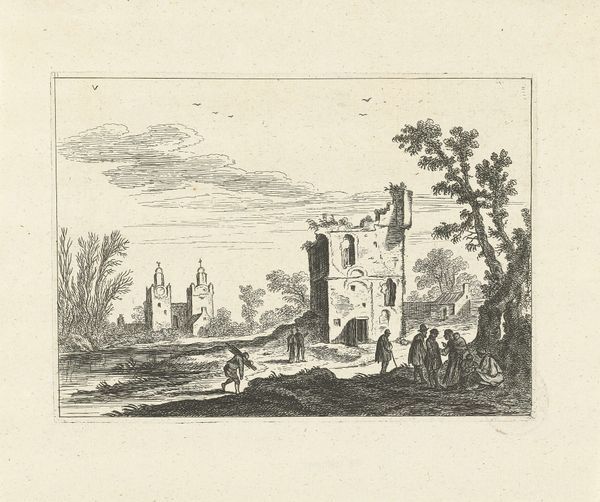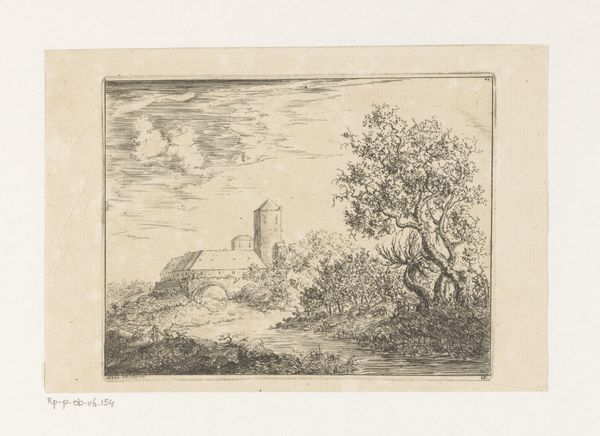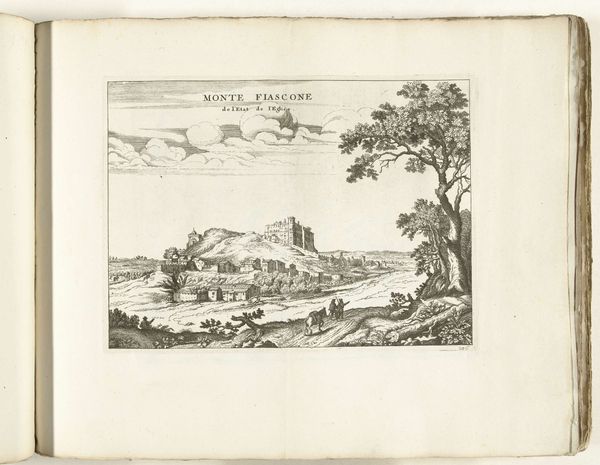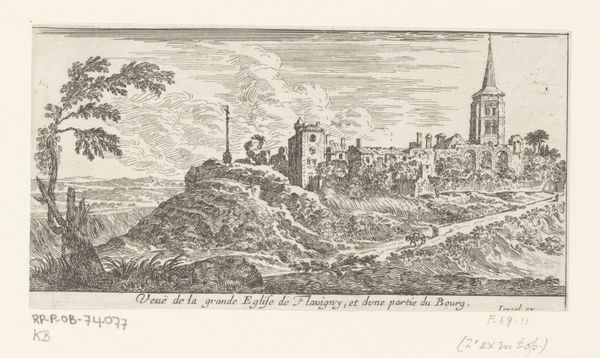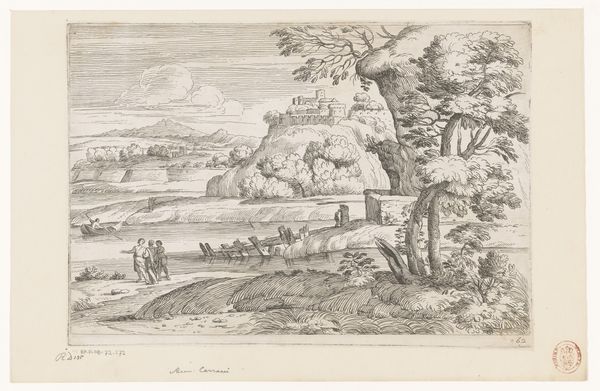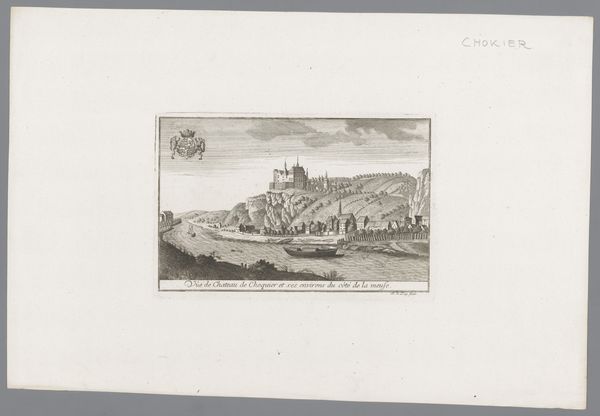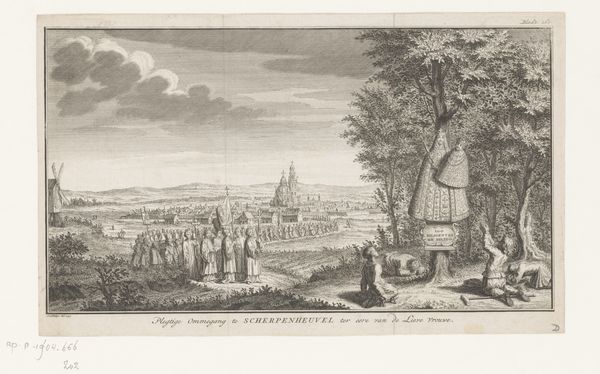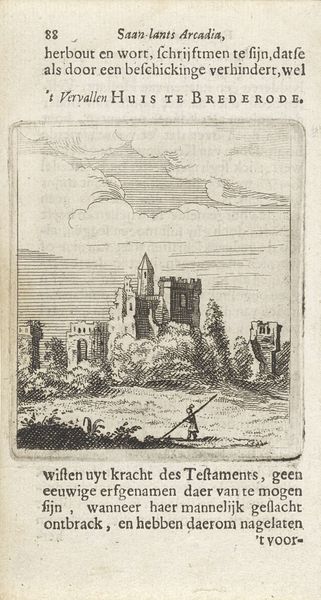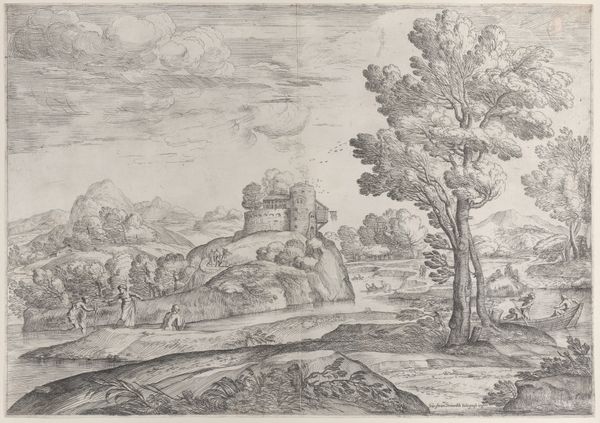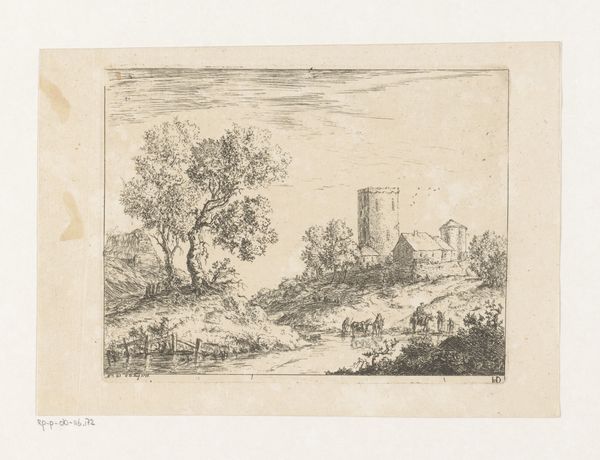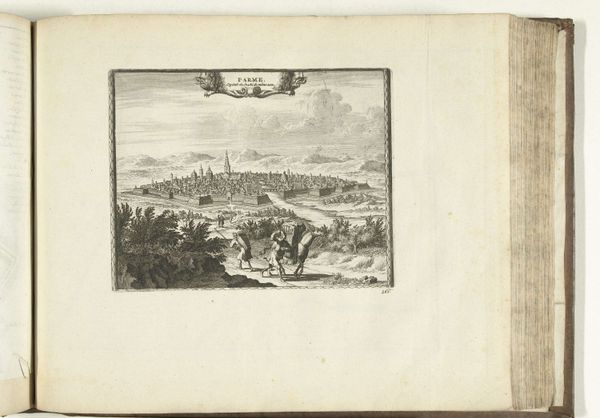
drawing, print, etching
#
drawing
#
baroque
#
dutch-golden-age
# print
#
etching
#
landscape
#
etching
#
cityscape
Dimensions: height 170 mm, width 208 mm
Copyright: Rijks Museum: Open Domain
Curator: Welcome. Today, we are looking at "Gezicht op de ruïne van Huis Kronenburg," an etching by Hendrik de Leth, dating back to 1729. It resides here at the Rijksmuseum. Editor: It's quite delicate. There’s a strange stillness, a calm amidst the ruin. I notice how the composition guides my eye first to the fragmented wall, and then further back into the distance. Curator: Indeed. The work demonstrates a keen understanding of perspective and light, particularly how de Leth delineates the structures. Observe the almost scientific precision in capturing the ruin. It’s not just representation, it’s structural exposition. Editor: I see the ruin less as an architectural study and more as a meditation on time and impermanence. That single standing section of wall, the two figures gazing upon it—it evokes a sense of loss, a bygone era. There is a symbolic weight given to lost castles and how they erode into nature. Curator: A point well taken, particularly when understanding the broader cultural narrative within which de Leth was operating. In his treatment of light and shadow and with the rendering of the landscape, de Leth presents a layered formal engagement, almost pushing the drawing to exceed representation alone. Editor: Note also the strategic use of detail— the delicate etching of the clouds above and the way that they cast shade on the town within the distance adds emotional depth, a contrast between decay and ongoing human settlement. The etching’s dual presentation—landscape view and flat map—presents past and present in poignant counterpoint. Curator: Perhaps, though, de Leth might argue his primary intention lay not in expressing melancholy, but to archive and record in detail a particular location for scholarly intent. Its true resonance arises precisely in its carefully executed, almost impassive portrayal. Editor: Even with the intention of creating a faithful record, one cannot erase cultural understanding. The remnants symbolize what once was, touching us, despite ourselves, creating a timeless emotional bridge. Curator: Thank you. I hadn’t considered it quite that way. Editor: My pleasure.
Comments
No comments
Be the first to comment and join the conversation on the ultimate creative platform.
